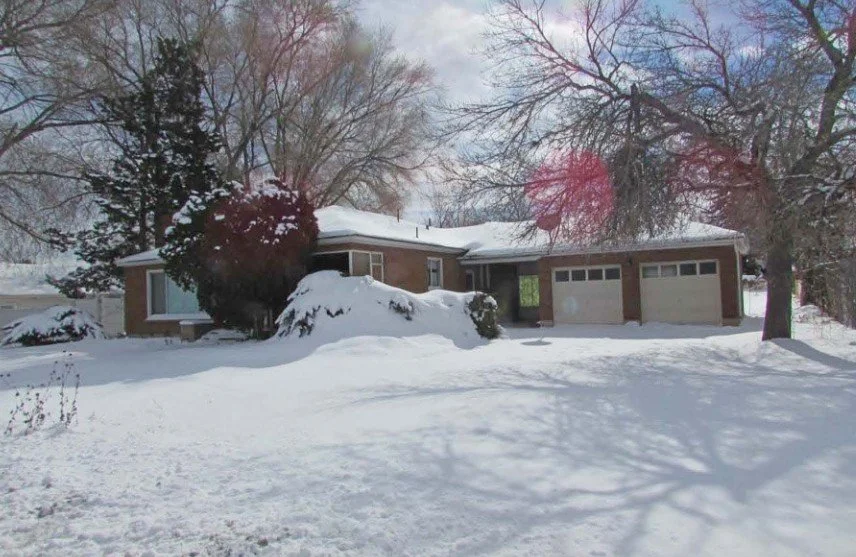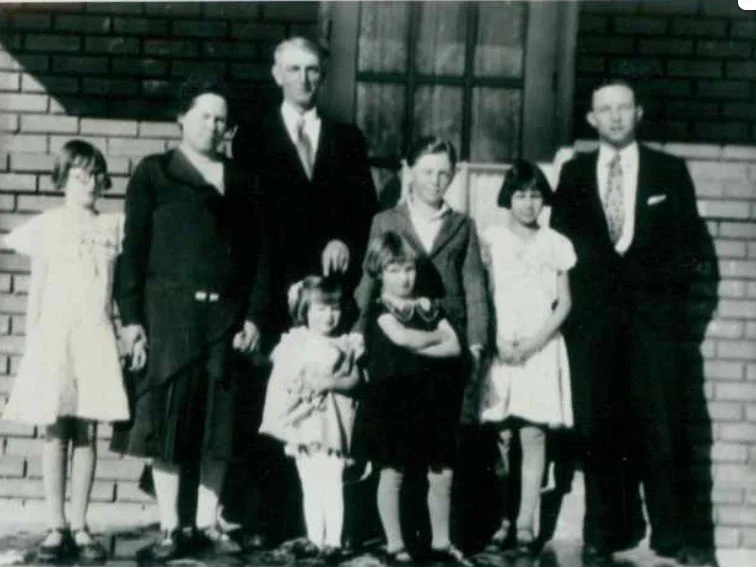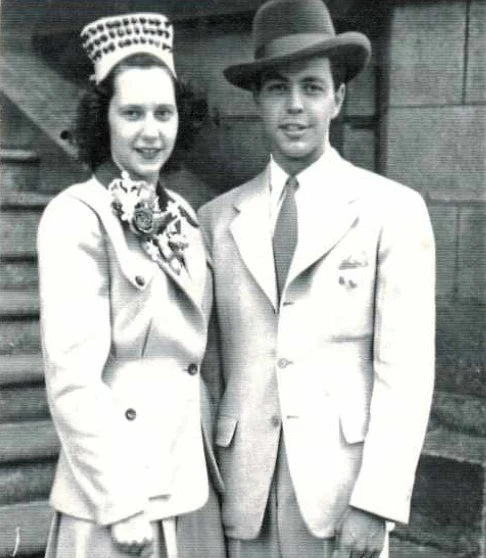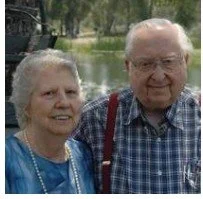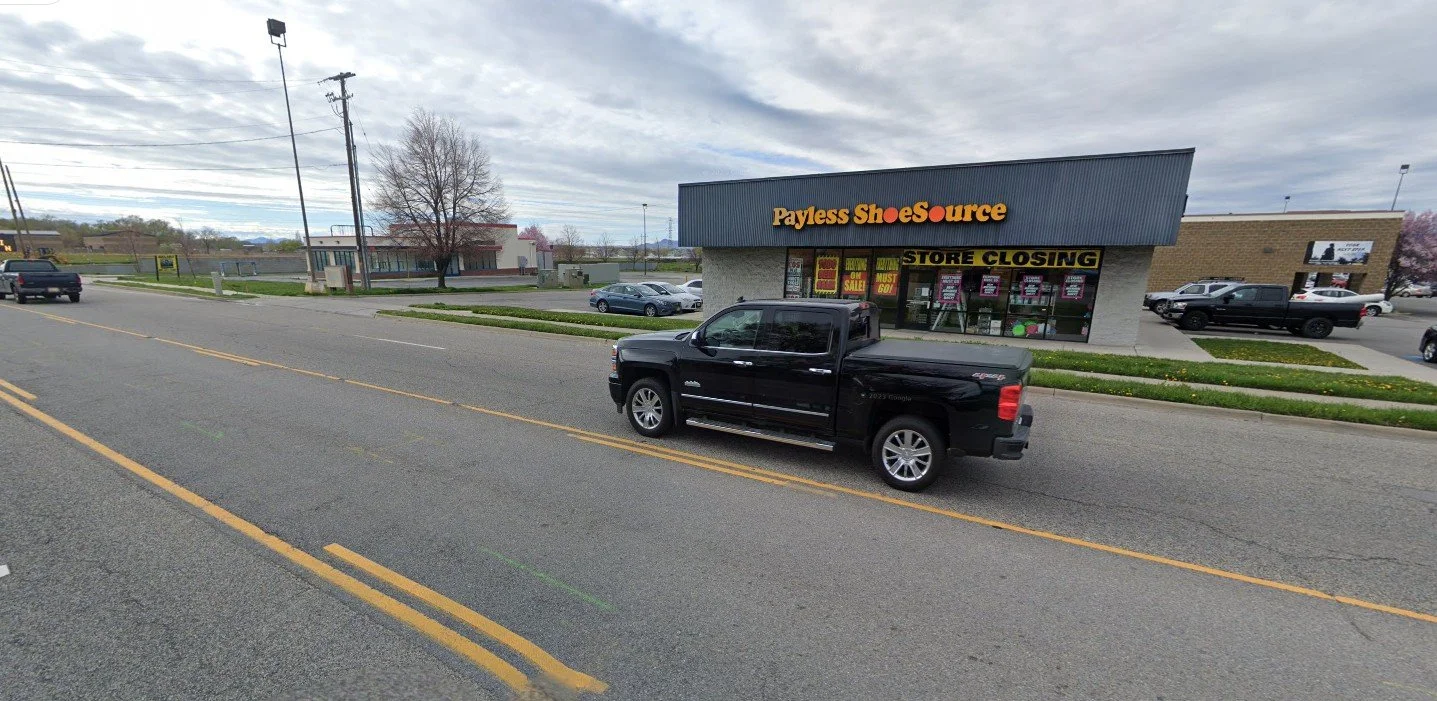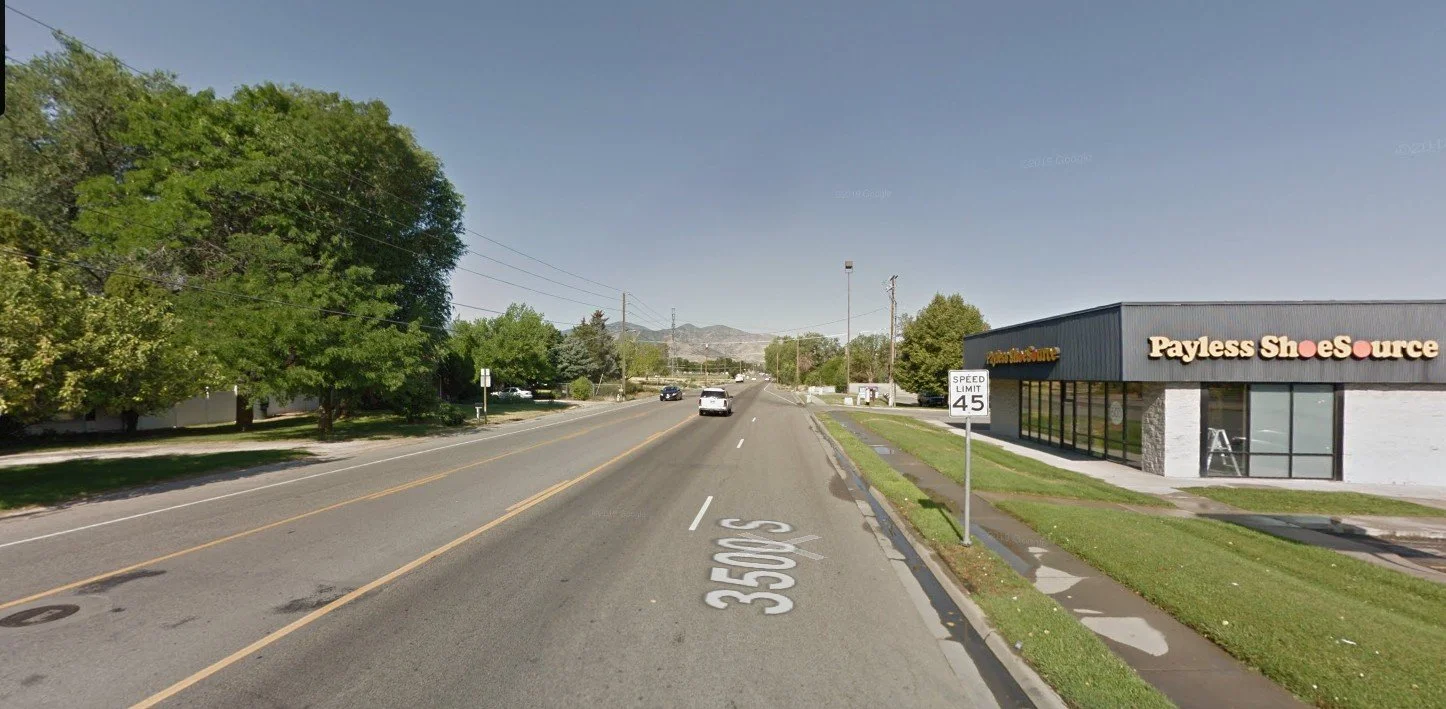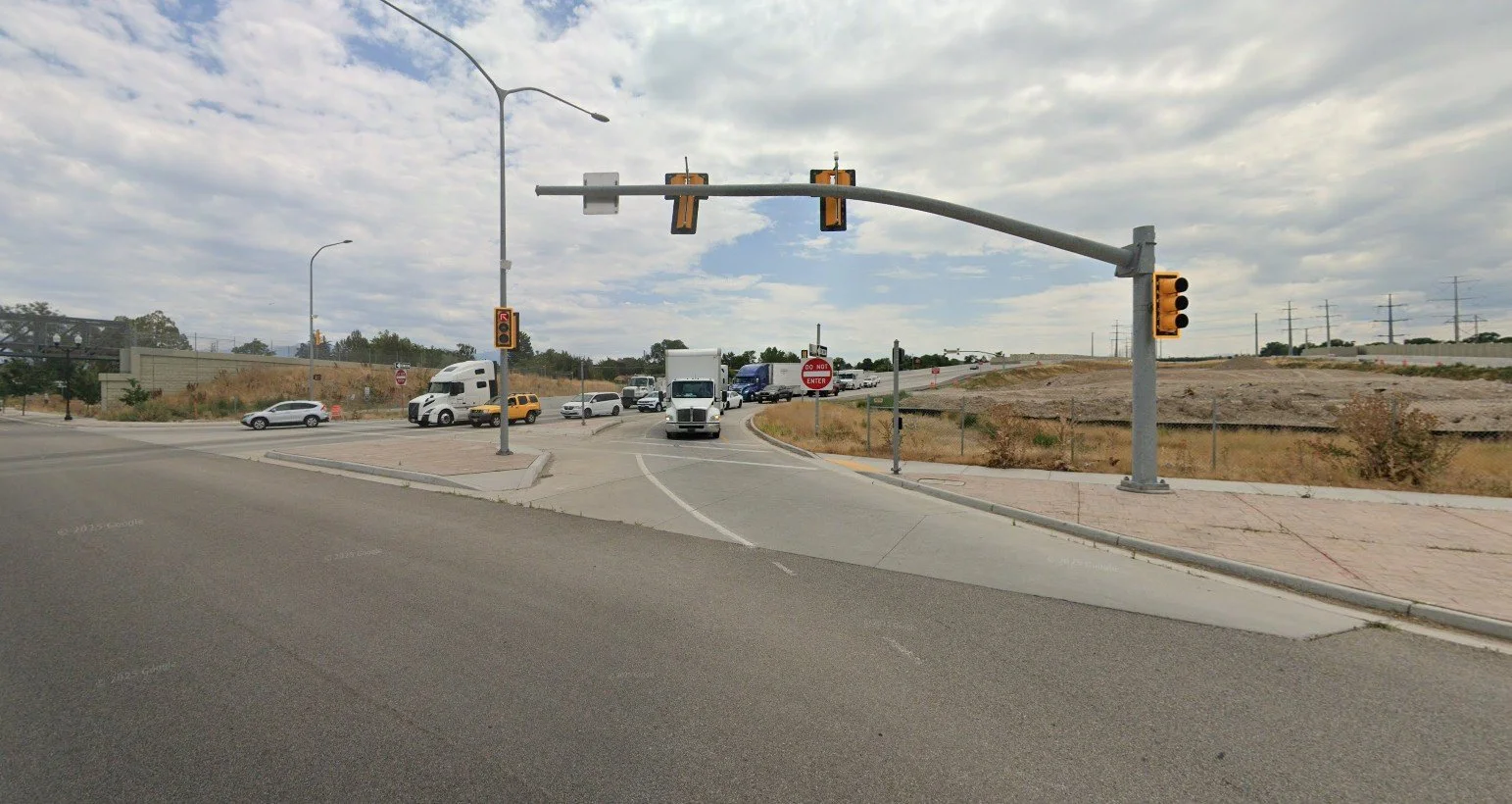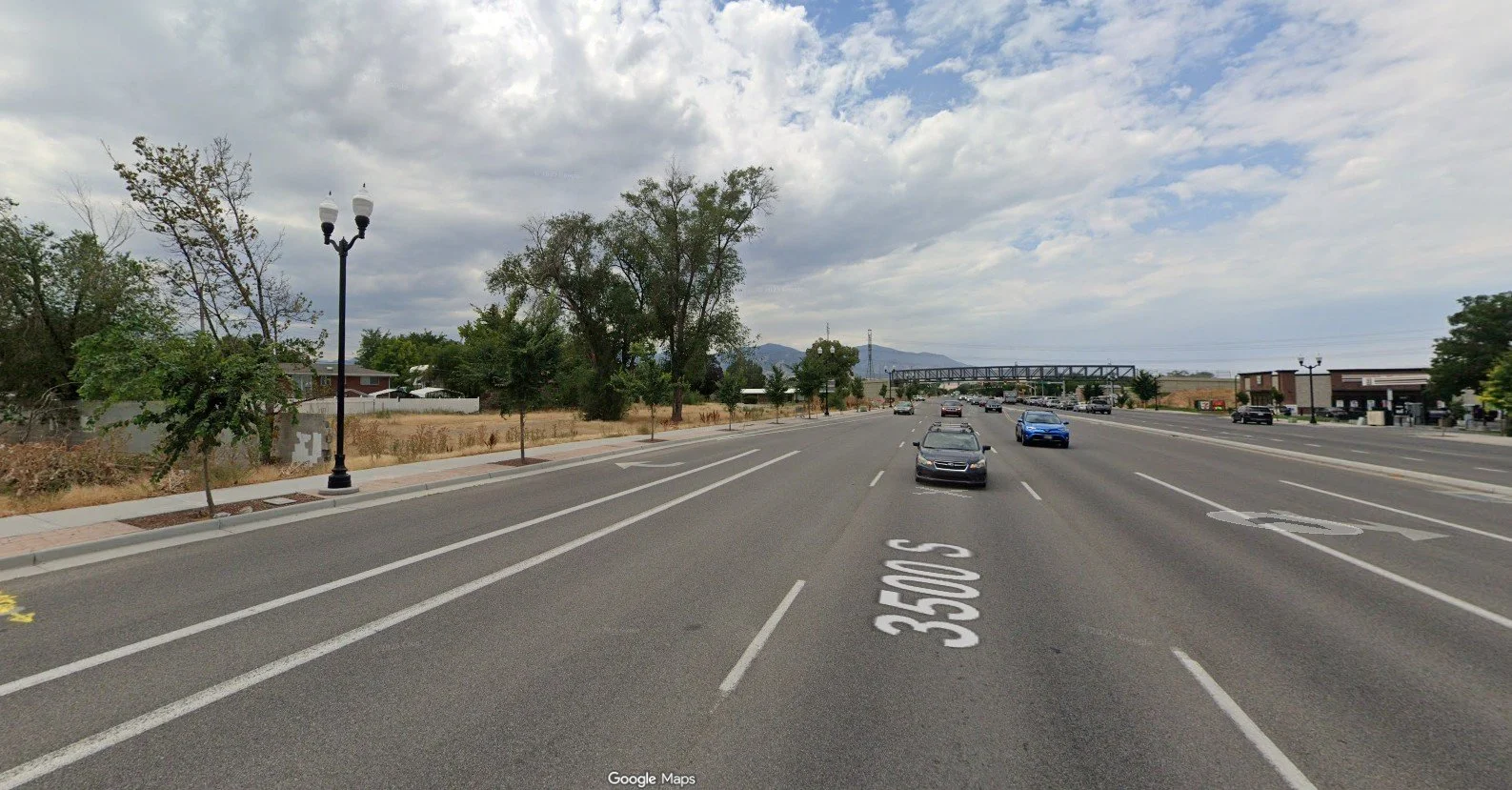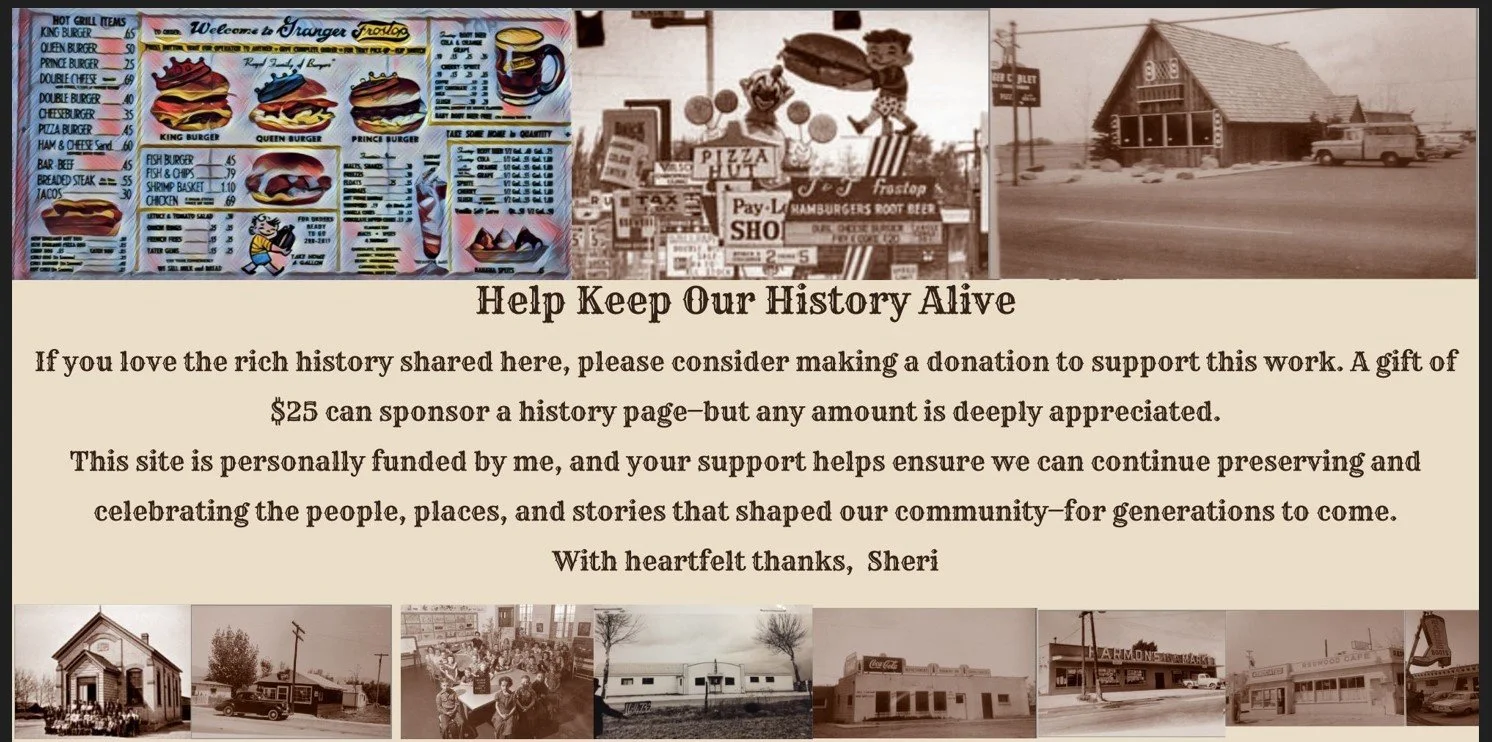From Homestead to Highway: Jones Farm, 5671 West 3500 South
Remembering 5671 West 3500 South
The home once standing at 5671 West 3500 South is gone now—its place taken by the Mountain View Corridor freeway—but its story remains rooted in the history of Granger’s early families.
Alfred and Hannah Jones with their children—pioneers of the Granger area and founders of the historic Jones Homestead in the area of 5700 West 3500 South
The land was originally part of an expansive farm and ranch owned by Alfred Abraham Jones and his wife Hannah Maria Gibbs Jones. Alfred, born in 1850 in South Wales, immigrated to Utah and married Hannah in 1875. Together they raised five children: Alfred Thomas, Charlotte, Horace, Robert, and Willard.
Property records suggest that Alfred and Hannah deeded a large portion of their land—to son Willard Jones
5671 West 3500 South
Once a beautiful home, 5971 West 3500 South has a rich history tied to several local families. The land originally belonged to Willard and Mary Alice (Warr) Jones, later passing to Ephraim, John, and Irene Jones Furness, and then for 60 years to Ronald & Geraldine P. Barker, before eventually being deeded to the Utah Department of Transportation (UDOT).
The residence itself is a single-story Early Ranch-style home, constructed in 1954 on a 0.40-acre lot on the south side of 3500 South. It features tan-orange striated brick siding, rests on a concrete basement foundation, and is topped with a moderately pitched hipped roof clad in asphalt shingles. The soffits are closed throughout, and the eaves are narrow, reflecting the typical Early Ranch aesthetic. A 2-car garage, attached by a covered breezeway, completes the home, offering both function and charm for the mid-century family that lived there.
OWNERS
With a couple of owners and the passage of time, it remains a exceptional example of mid-20th-century residential architecture in Granger and it’s beauty is missed .
Willard James Jones (1883–1971) and his wife Mary Alice Warr Jones (1885–1975) were the stewards of the Jones homestead on 3500 South, land first settled by Willard’s parents, Alfred Abraham and Hannah Gibbs Jones. Willard, born in Hunter, Utah, dedicated his life to education, serving as a beloved school principal whose influence shaped generations of local children. Mary Alice, a Granger native, was known for her devotion to family and community. Together they raised seven children on the land, preserving the pioneer legacy of their parents while adding their own chapter of hard work, faith, and service. Their homestead later became the site of homes, including the residence at 5971 West 3500 South.
Ephraim and Irene Jones Furness made their home for several years at 5671 West 3500 South, a house built on the Jones family homestead that had belonged to Irene’s father, Willard Jones, and grandfather, Alfred Jones. Irene, a Cypress High graduate, married her sweetheart Eph in 1943. She was known for her warm hospitality, her homemade whole wheat bread, and raspberry jam. Eph, remembered as one of the kindest and most optimistic people you could ever meet, loved gardening—especially his roses, grapes, and tomatoes. A man of faith and service, he sang in the choir until just three years before his passing and faithfully carried out his church home teaching. Together, Eph and Irene filled their home with love, family, and community connecti
Ronald and Geraldine “Gerrie” Barker made their home at 5671 West 3500 South for nearly 60 years, where they became beloved members of the Hunter community. Gerrie, a certified dental assistant and court reporter, married Ron in 1952, supporting him through law school at the University of Utah. Ron went on to practice law for 63 years and was also a CPA, arguing cases before the 10th Circuit Court of Appeals and even the U.S. Supreme Court. Together, the Barkers built a landmark home filled with family, faith, and service until it was eventually removed to make way for the Mountain View Corridor.
UDOT saw fit to bring major change to our community with the construction of the Mountain View Corridor. What was once farmland, quiet neighborhoods, and open space has now become a busy transportation route—shaping growth, accessibility, and the very landscape of West Valley City


